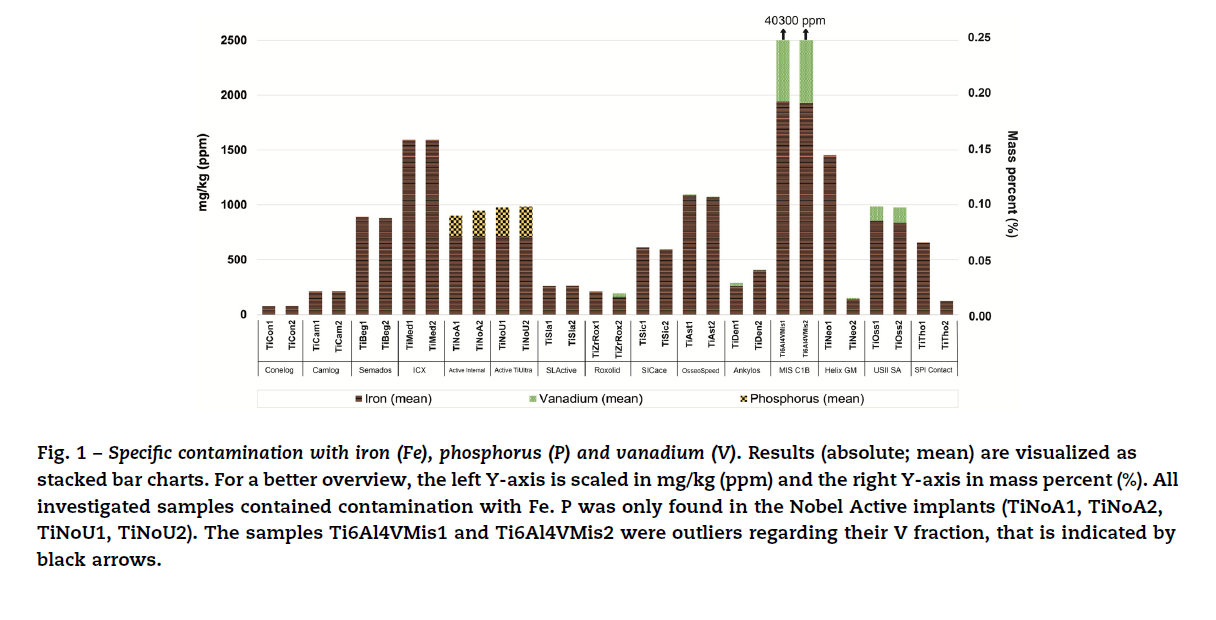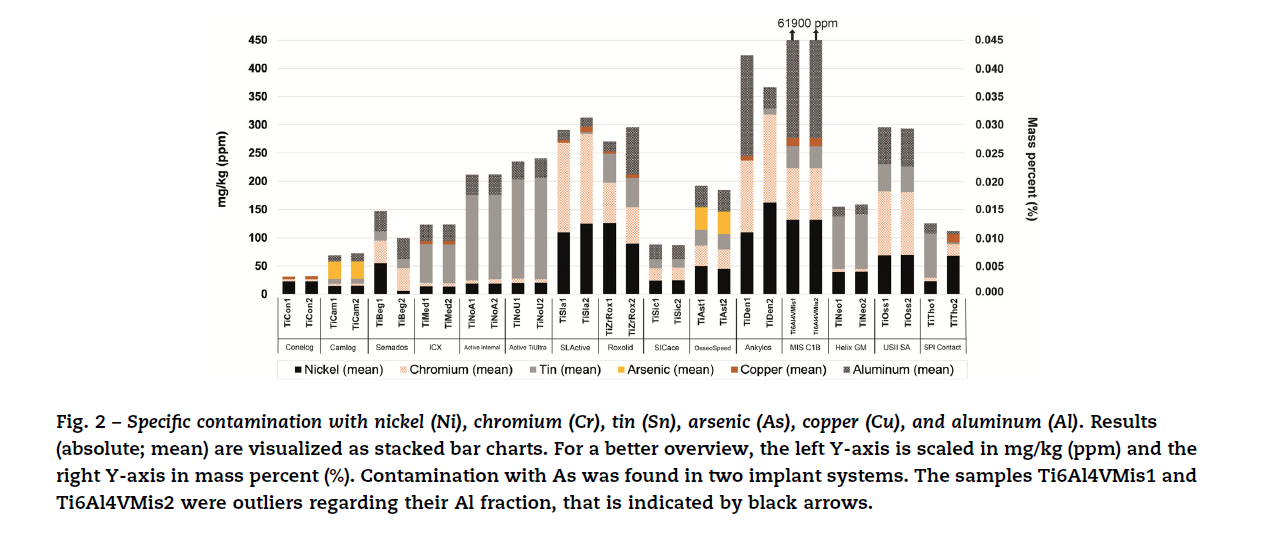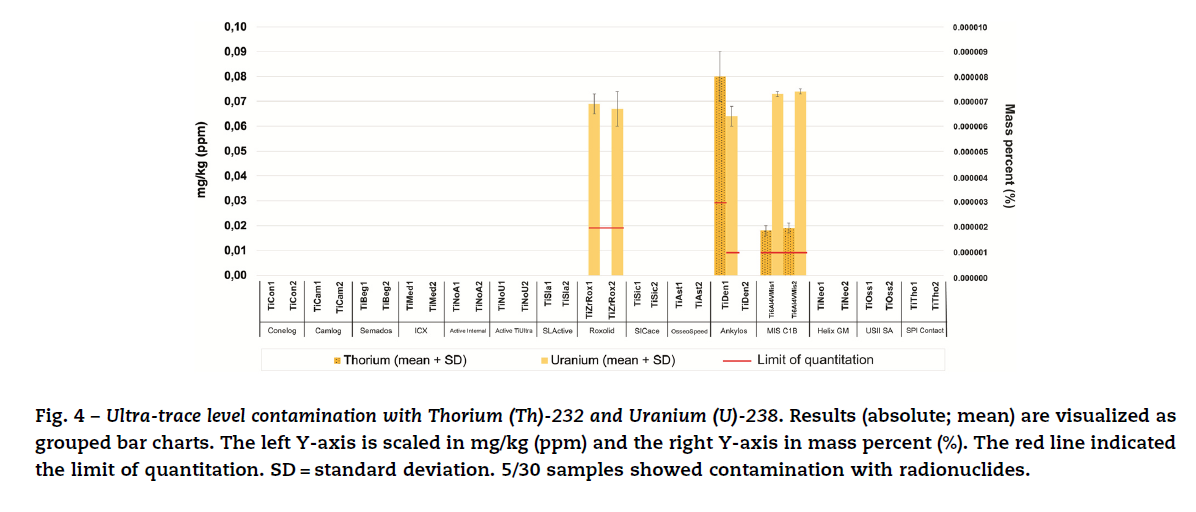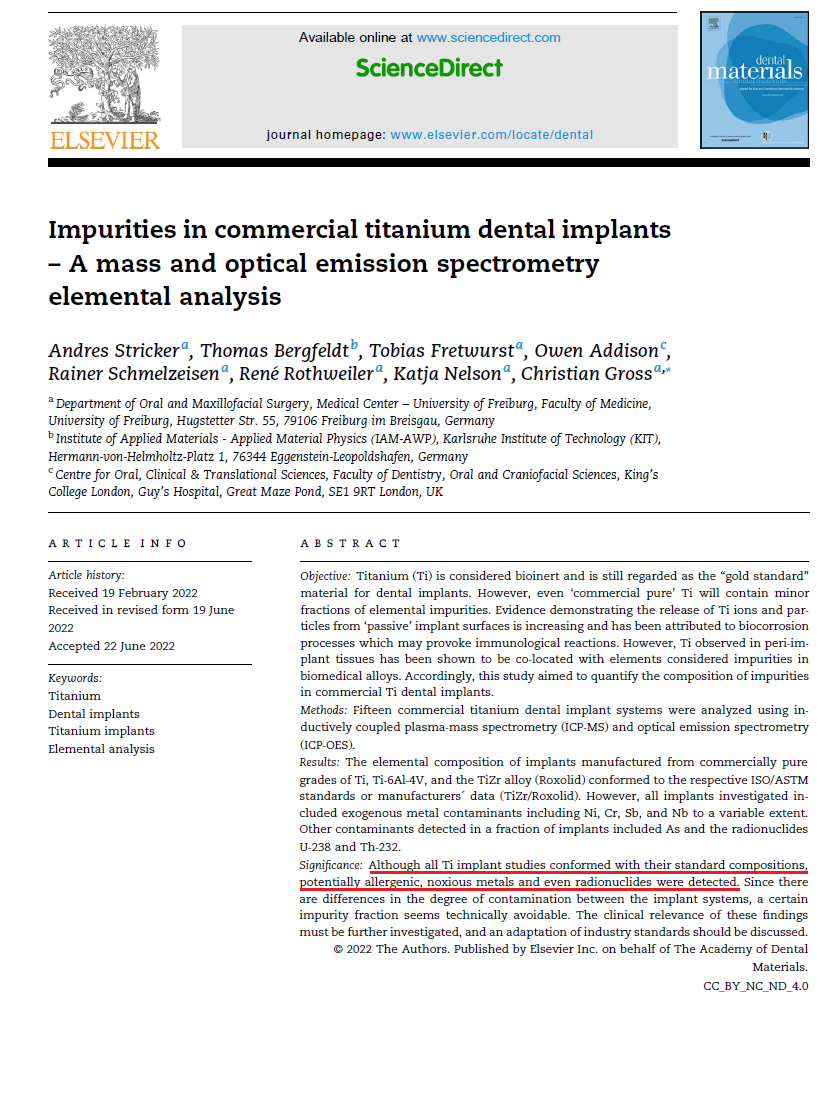Impurities in commercial titanium dental implants– A mass and optical emission spectrometryelemental analysis
/uploads/arquivos/Impurities-in-commercial-titanium-dental-implants.pdf
- DOI: 10.1016/j.dental.2022.06.028 License CC BY-NC-ND 4.0
- Andres Stricker
- Thomas Bergfeldt
- Tobias Fretwurst
- Christian Gross
Abstract:
Objective: Titanium (Ti) is considered bioinert and is still regarded as the “gold standard”material for dental implants. However, even ‘commercial pure’ Ti will contain minorfractions of elemental impurities. Evidence demonstrating the release of Ti ions and par-ticles from ‘passive’ implant surfaces is increasing and has been attributed to biocorrosionprocesses which may provoke immunological reactions. However, Ti observed in peri-im-plant tissues has been shown to be co-located with elements considered impurities inbiomedical alloys. Accordingly, this study aimed to quantify the composition of impuritiesin commercial Ti dental implants.
Methods: Fifteen commercial titanium dental implant systems were analyzed using in-ductively coupled plasma-mass spectrometry (ICP-MS) and optical emission spectrometry(ICP-OES).
Results: The elemental composition of implants manufactured from commercially puregrades of Ti, Ti-6Al-4V, and the TiZr alloy (Roxolid) conformed to the respective ISO/ASTMstandards or manufacturers ́ data (TiZr/Roxolid). However, all implants investigated in-cluded exogenous metal contaminants including Ni, Cr, Sb, and Nb to a variable extent.Other contaminants detected in a fraction of implants included As and the radionuclidesU-238 and Th-232.
Significance: Although all Ti implant studies conformed with their standard compositions,potentially allergenic, noxious metals and even radionuclides were detected. Since thereare differences in the degree of contamination between the implant systems, a certainimpurity fraction seems technically avoidable. The clinical relevance of these findingsmust be further investigated, and an adaptation of industry standards should be discussed.




Conclusion Based on the results of the present ICP-MS/OES analysis, the following conclusions can be drawn:
1. Although all investigated Ti dental implants conform to the respective standards and manufacturer´s specifications, all contain traceable contamination with several metal elements.
2. The contaminants differed between the implant systems and included harmless essential trace elements and potentially noxious metals, e.g., As and radionuclides.
3.Further research must prove generalization on other implant systems and the biological relevance of these contamination. Especially the role of potentially allergenic contaminants, such as Ni, is of clinical interest.
4.Since there are relevant differences in the degree of contamination with metal elements between the implant systems, a certain impurity fraction seems technically avoidable. An adaptation of the relevant standards, particularly additional limit values for contaminants, should be discussed.

See free analysis at: https://implante.institute/analises?perm_status=1
#implantinstitute #implantcontamination #contamination #implantlost #titanium #zirconia #metal #aluminumfree #toxic #alumina #odontistry #materialscience #cellbiology #implantdentistry #dentist #implant #dental #dentalcare #plantcontentental #esthetic #cell
